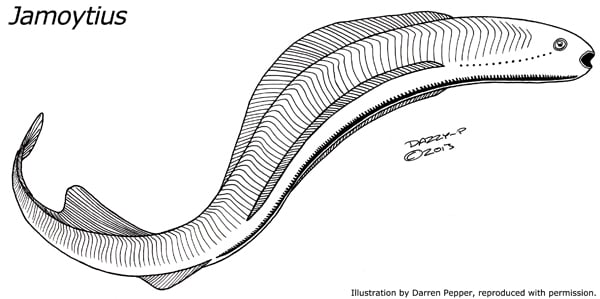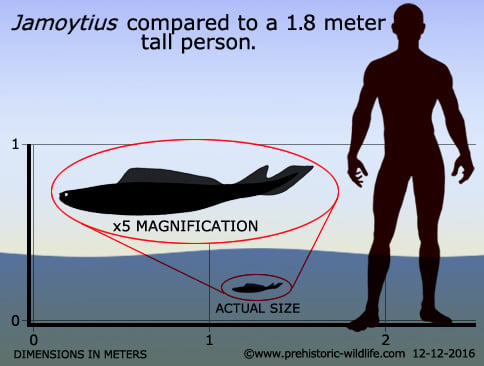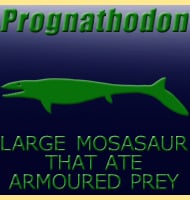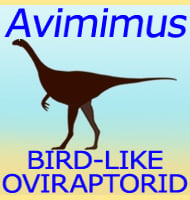In Depth
Jamoytius was a jawless fish of the Silurian, though its credibility has in the past been cast in doubt. Several researchers examined the original fossils and rather than interpreting them as the carbonised remains of muscles, they interpreted them as the scales of an anapsid reptile. Later fossil discoveries however, including specimens with the mouth preserved re-conformed White’s original interpretation that Jamoytius was indeed a jawless fish. That said, some past fossil specimens once attributed to Jamoytius have now been found not to belong to the genus.
For lack of a better description, Jamoytius seems to resemble a modern lamprey in form, and may have lived in a similar manner, rasping away at the body of another fish before latching on and sucking blood from its target. However, hard teeth are so far unknown and so Jamoytius might have been swum around looking for small organisms to suck into its mouth. Jamoytius had an elongated body with long fins along its back and flanks. The jawless mouth of Jamoytius was faced forwards from the front. The position of the mouth makes it less likely that Jamoytius was a detritivore because most fish that lived that way during the Silurian had their mouths on the undersides of the head.
Further Reading
– Jamoytius kerwoodi, a new chordate from the Silurian of Lanarkshire [Scotland]. – Geological Magazine. 83 (2): 89–97. – E. I. White – 1946. – A new interpretation of Jamoytius kerwoodi White – A. Ritchie – 1960. - New Evidence on Jamoytius kerwoodi White, An Important Ostracoderm From The Silurian of Lanarkshire, Scotland, Alexander Ritchie - 1968. – Taphonomy and Affinity of an Enigmatic Silurian Vertebrate, Jamoytius Kerwoodi White. – Palaeontology. 53 (6): 1393–1409. – Robert S. Sansom Kim Freedman Sarah E. Gabbott Richard J. Aldridge Mark A. Purnell – 2010.











